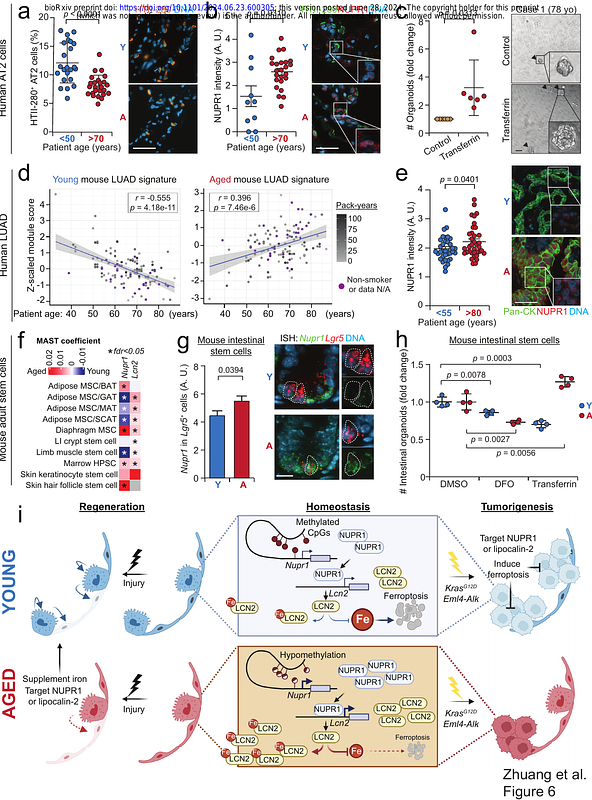Aging limits stemness and tumorigenesis in the lung by reprogramming iron homeostasis

Aging limits stemness and tumorigenesis in the lung by reprogramming iron homeostasis
Zhuang, X.; Wang, Q.; Joost, S.; Ferrena, A.; Humphreys, D. T.; LI, Z.; Blum, M.; Bastl, K.; Ding, S.; Landais, Y.; Zhan, Y.; Zhao, Y.; Chaligne, R.; Lee, J.-H.; Carrasco, S. E.; Bhanot, U. K.; Koche, R. P.; Bott, M. J.; Katajisto, P.; Soto-Feliciano, Y. M.; Pisanic, T. R.; Thomas, T.; Zheng, D.; Wong, E.; Tammela, T.
AbstractAging is associated with a decline in the number and fitness of adult stem cells. Aging-associated loss of stemness is posited to suppress tumorigenesis, but this hypothesis has not been tested in vivo. Here, using physiologically aged autochthonous genetically engineered mouse models and primary cells, we demonstrate aging suppresses lung cancer initiation and progression by degrading stemness of the alveolar cell of origin. This phenotype is underpinned by aging-associated induction of the transcription factor NUPR1 and its downstream target lipocalin-2 in the cell of origin in mice and humans, leading to a functional iron insufficiency in the aged cells. Genetic inactivation of the NUPR1-lipocalin-2 axis or iron supplementation rescue stemness and promote tumorigenic potential of aged alveolar cells. Conversely, targeting the NUPR1-lipocalin-2 axis is detrimental to young alveolar cells via induction of ferroptosis. We find that aging-associated DNA hypomethylation at specific enhancer sites associates with elevated NUPR1 expression, which is recapitulated in young alveolar cells by inhibition of DNA methylation. We uncover that aging drives a functional iron insufficiency, which leads to loss of stemness and tumorigenesis, but promotes resistance to ferroptosis. These findings have significant implications for the therapeutic modulation of cellular iron homeostasis in regenerative medicine and in cancer prevention. Furthermore, our findings are consistent with a model whereby most human cancers initiate in young individuals, revealing a critical window for such cancer prevention efforts.


